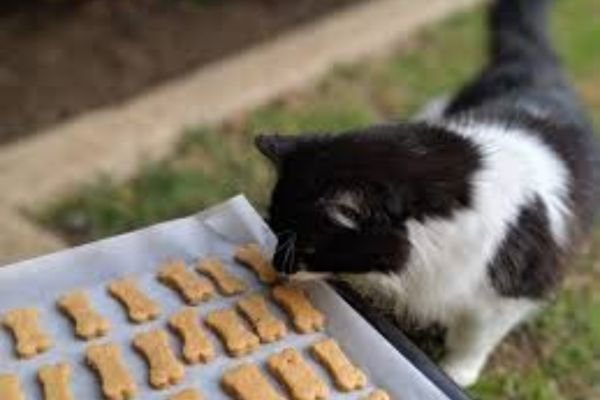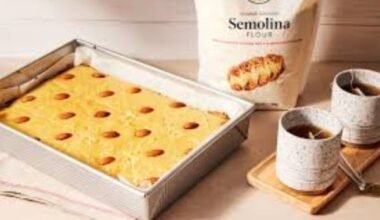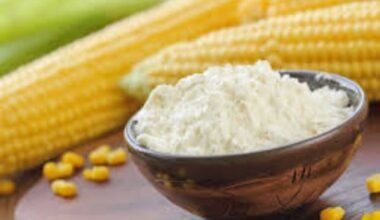Wet Cat Food Recipes have revolutionized the way cat owners approach feline nutrition. Rather than relying solely on store-bought alternatives, many pet parents are turning to Wet Cat Food Recipes to ensure their feline companions enjoy fresh, healthy, and nutrient-rich meals. As more people prioritize wholesome diets for themselves, it only makes sense to extend that care and attention to their furry friends through carefully curated Wet Cat Food Recipes.
Why Wet Cat Food Recipes Are a Game-Changer
Wet Cat Food Recipes are not just about taste—they’re about health, hydration, and happiness. Cats, by nature, require a diet high in moisture, and Wet Cat Food Recipes provide exactly that. Unlike dry kibble, which lacks sufficient water content, Wet Cat Food Recipes help support urinary tract health and prevent dehydration. This is especially crucial for cats that don’t drink water frequently. The benefit of choosing Wet Cat Food Recipes goes beyond hydration—it’s also about control. With Wet Cat Food Recipes, you decide what goes into your cat’s bowl. From protein sources to added supplements, the customization possibilities are endless.
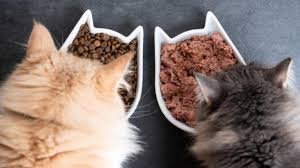
Understanding the Nutritional Needs in Wet Cat Food Recipes
Wet Cat Food Recipes should mimic a cat’s natural carnivorous diet. Cats are obligate carnivores, meaning their bodies thrive best on animal-based protein. Any effective Wet Cat Food Recipes should reflect that by incorporating high-quality meats like chicken, turkey, beef, or fish. The beauty of Wet Cat Food Recipes is that they can be tailored to suit the specific health needs of your cat—whether your pet has allergies, a sensitive stomach, or requires more protein for muscle development.
Wet Cat Food Recipes also make it easier to incorporate important nutrients like taurine, omega fatty acids, and essential vitamins. Since you’re in control, Wet Cat Food Recipes allow you to avoid common additives and fillers that can be harmful or unnecessary. By sticking with homemade Wet Cat Food Recipes, you’re providing a cleaner, more nutritious meal every time.
Wet Cat Food Recipes: Ingredients You Can Trust
The ingredients used in Wet Cat Food Recipes can be as simple or elaborate as you wish. The key to successful Wet Cat Food Recipes is focusing on whole foods. Use human-grade meats, such as chicken thighs, turkey breast, or lean beef, and add organ meats like liver or heart for added nutrition. Fish such as salmon or sardines, when properly deboned and cooked, add omega-3s essential for coat health. Wet Cat Food Recipes also allow for a moderate inclusion of vegetables like pumpkin or spinach, but these should always be secondary to the meat content.
You can include supplements like taurine powder, fish oil, or vitamin E to enhance the health benefits of Wet Cat Food Recipes. Always consult a vet before adding supplements to your Wet Cat Food Recipes, but rest assured—these additions can help tailor the meals to meet your cat’s precise dietary needs.
Wet Cat Food Recipes for Picky Eaters
If your cat turns its nose up at traditional meals, Wet Cat Food Recipes might be the solution. The texture, aroma, and taste of freshly prepared Wet Cat Food Recipes appeal to even the pickiest of cats. Unlike dry food, Wet Cat Food Recipes offer variety in form—chunks, pâté, shredded—and that variety keeps mealtime exciting. Even more, Wet Cat Food Recipes can be gently warmed to enhance smell and flavor, encouraging your finicky feline to eat. The adaptability of Wet Cat Food Recipes allows you to cater to specific preferences without compromising on nutrition.
Wet Cat Food Recipes are particularly useful for senior cats or those with dental issues, as soft food is easier to chew. Wet Cat Food Recipes provide an opportunity to introduce a broader range of protein sources that might be off the table with commercial products. Whether your cat prefers chicken over tuna or turkey over beef, Wet Cat Food Recipes can be adapted to satisfy those cravings.
Benefits of Homemade Wet Cat Food Recipes
When you switch to homemade Wet Cat Food Recipes, you take control of every ingredient. You ensure that the meats are fresh, the fats are healthy, and the carbs are minimal. Wet Cat Food Recipes made at home eliminate artificial preservatives, coloring agents, and mystery fillers that are all too common in commercial products. Instead, Wet Cat Food Recipes offers a clean eating solution that supports your cat’s digestive system, boosts energy levels, and enhances coat quality.
Another major advantage of Wet Cat Food Recipes is cost efficiency. While premium canned foods are expensive, Wet Cat Food Recipes lets you buy ingredients in bulk and cook in batches, saving you money in the long run. And let’s not forget the emotional benefit—knowing that you’re nourishing your pet with fresh Wet Cat Food Recipes adds to the bond between you and your cat.
Storage and Safety Tips for Wet Cat Food Recipes
Wet cat food recipes should always be handled with care. Once cooked, wet cat food recipes should be cooled quickly and stored in airtight containers in the fridge. Most wet cat food recipes stay fresh for three days when refrigerated. For longer storage, freeze portions of your wet cat food recipes and thaw them as needed. This not only maintains freshness but also ensures that wet cat food recipes are always available without daily preparation.
Cleanliness is critical when preparing wet cat food recipes. Use clean utensils and cooking surfaces, and wash your hands before handling ingredients. Raw meats should be cooked to eliminate bacteria unless you’re working with a raw food diet under veterinary guidance. Following food safety practices ensures your wet cat food recipes remain safe, fresh, and healthy.
Transitioning Your Cat to Wet Cat Food Recipes
Switching from commercial kibble to Wet Cat Food Recipes requires patience. Cats are creatures of habit, and sudden changes can lead to gastrointestinal upset or refusal to eat. The best approach is to gradually introduce Wet Cat Food Recipes by mixing small amounts into their usual food. Over a week or two, increase the ratio of Wet Cat Food Recipes until it completely replaces the kibble.
During this transition, monitor your cat’s reaction to the new Wet Cat Food Recipes. Look out for changes in appetite, stool quality, or energy levels. These signs can help you adjust your Wet Cat Food Recipes accordingly. It’s also helpful to introduce one protein source at a time within your Wet Cat Food Recipes to detect any allergies or intolerances. Gradual transitions help your cat associate Wet Cat Food Recipes with comfort and nourishment, making them more likely to embrace the change.
How To Make Wet Food For Cats At Home
Making wet food for cats at home can be a healthy and cost-effective way to ensure your feline friend gets quality nutrition — but it’s essential to ensure the meal is balanced and species-appropriate. Cats are obligate carnivores, so their diet must include high-quality animal protein, essential fatty acids, and taurine, an amino acid critical for heart and eye health.
Basic Guidelines:
-
Use human-grade meat (chicken, turkey, rabbit, beef, or fish).
-
Include organ meats (like liver and heart) for essential nutrients.
-
Add taurine if not using raw heart meat (the heart is naturally high in taurine).
-
Provide moisture (broth or water).
-
Avoid seasonings, onions, garlic, and grains — they can be toxic to cats.
Simple Homemade Wet Cat Food Recipe
Ingredients:
-
1 kg (2.2 lbs) boneless chicken thighs (boiled or lightly cooked)
-
100g (3.5 oz) chicken liver
-
50g (1.7 oz) chicken heart (or add taurine supplement)
-
1 large egg yolk
-
200 ml bone broth (unsalted, no onion/garlic)
-
1 tsp fish oil (omega-3s)
-
500 mg taurine supplement (if not using heart)
-
1 tsp calcium carbonate (or finely ground eggshell)
-
Optional: small amounts of pumpkin puree (fiber)
Instructions:
-
Cook the meats (lightly steam or boil) to remove surface bacteria. Do not overcook — cats benefit from partially raw diets, but consult a vet before feeding raw.
-
Blend meats, liver, heart, and egg yolk until smooth.
-
Add broth, fish oil, calcium, and taurine. Mix thoroughly.
-
Allow it to cool completely before storing.
-
Portion into airtight containers and refrigerate (up to 3 days) or freeze (up to 2 weeks).
Safety Tips:
-
Consult a vet or pet nutritionist before switching to homemade.
-
Always ensure taurine and calcium needs are met.
-
If using fish, do so in moderation due to mercury content.
-
Do not feed bones unless raw and ground (cooked bones are dangerous).
Feeding Instructions:
-
Feed about 30-35 calories per pound of your cat’s ideal weight.
-
Most adult cats need 150–250 grams (5–9 oz) of wet food per day, split into 2-3 meals.
Common Mistakes to Avoid with Wet Cat Food Recipes
While Wet Cat Food Recipes offer numerous benefits, there are pitfalls to avoid. One common mistake is relying on recipes that lack balance. All Wet Cat Food Recipes must be nutritionally complete. That means including the right mix of protein, fat, moisture, and essential vitamins. Simply boiling chicken isn’t enough. Effective Wet Cat Food Recipes often require added taurine, calcium, and other minerals to mimic the nutritional makeup of prey animals.
Another mistake in preparing Wet Cat Food Recipes is using unsafe ingredients. Onions, garlic, certain spices, and even too much liver can be toxic. Avoid seasoning your Wet Cat Food Recipes the way you would your meals. Cats have different biological needs, and simple, clean ingredients are best. Lastly, improper storage of Wet Cat Food Recipes can lead to bacterial contamination. Always store Wet Cat Food Recipes in sanitized containers and use them within a safe time frame.
Best Protein Sources for Wet Cat Food Recipes
Choosing the right protein is the cornerstone of all Wet Cat Food Recipes. Quality meats provide amino acids that cats need for muscle maintenance, energy, and immune function. The most commonly used proteins in Wet Cat Food Recipes include chicken, turkey, beef, lamb, and fish. Each offers its benefits. For example, chicken and turkey are lean, digestible, and widely tolerated. Beef adds richness to Wet Cat Food Recipes, while lamb can be a great option for cats with food sensitivities.
Fish like sardines and mackerel are excellent additions to Wet Cat Food Recipes, offering omega-3 fatty acids that promote joint and skin health. However, fish should be used sparingly in Wet Cat Food Recipes due to potential mercury buildup. Balance is key when using any protein source. Varying your proteins across multiple Wet Cat Food Recipes helps expose your cat to different nutrients and keeps them engaged at mealtime.
Wet Cat Food Recipes Tailored for Special Health Conditions
Some cats have medical conditions that demand specialized diets. Wet Cat Food Recipes are ideal for crafting meals that address issues such as kidney disease, diabetes, obesity, or allergies. For example, Wet Cat Food Recipes for cats with kidney issues should be low in phosphorus and protein but high in moisture. In contrast, Wet Cat Food Recipes for diabetic cats should have high protein and low carbohydrates to stabilize blood sugar.
Allergy-prone cats benefit greatly from customized Wet Cat Food Recipes. You can eliminate common allergens and stick to novel proteins or limited-ingredient combinations. For overweight cats, Wet Cat Food Recipes can be portion-controlled and adjusted to reduce caloric intake without sacrificing satisfaction. Wet Cat Food Recipes allow for fine-tuning based on veterinary advice, offering a level of personalization no commercial food can match.
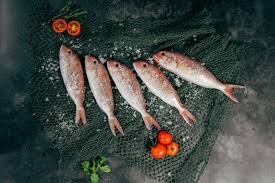
How Wet Cat Food Recipes Improve Hydration
Cats naturally get most of their water intake from food, and this is where Wet Cat Food Recipes shine. With water content typically exceeding 70%, Wet Cat Food Recipes play a major role in keeping cats hydrated. Proper hydration is essential for preventing urinary tract infections, kidney stones, and constipation. Unlike dry food, which can dehydrate over time, Wet Cat Food Recipes actively contribute to fluid balance.
This is especially important for older cats who may lose their natural thirst drive. Wet Cat Food Recipes ensure they still receive enough moisture even if they don’t drink water often. Hydration through Wet Cat Food Recipes also contributes to healthier skin, a shinier coat, and overall wellness. Cats with chronic conditions often benefit from increased moisture, making Wet Cat Food Recipes a practical and health-conscious solution.
Flavor Enhancements in Wet Cat Food Recipes
Enhancing the taste of Wet Cat Food Recipes can increase your cat’s enjoyment. Cats are sensitive to smell, so using aromatic ingredients makes Wet Cat Food Recipes more appealing. For instance, lightly sautéing meat before blending it into Wet Cat Food Recipes can bring out the flavor. A dash of tuna juice or bone broth can also elevate the sensory profile of your Wet Cat Food Recipes without compromising health.
It’s important to remember that flavorings in Wet Cat Food Recipes should be natural and safe. Never add salt, sugar, or artificial flavorings. Wet Cat Food Recipes shine best when simplicity meets nourishment. Herbs like catnip or parsley, in very small amounts, can add interest. Experimenting with flavors in your Wet Cat Food Recipes ensures your cat stays engaged and looks forward to each meal.
Smart Ways to Rotate Meals in Wet Cat Food Recipes
Rotating meals is an excellent strategy to enhance the nutritional value and appeal of Wet Cat Food Recipes. A well-structured rotation prevents your cat from becoming bored, reduces the risk of nutrient imbalances, and helps you discover what proteins or ingredients work best. The versatility of Wet Cat Food Recipes makes them perfect for rotation plans because you can vary not just the main protein but also the textures and flavor profiles.
One of the most effective ways to rotate Wet Cat Food Recipes is by changing the primary protein every few days. For example, start the week with chicken-based Wet Cat Food Recipes, transition to turkey mid-week, and then end the week with fish or lamb. This variety introduces new nutrients and amino acids that benefit overall health. Rotating Wet Cat Food Recipes can also help reduce the likelihood of food sensitivities that develop from eating the same ingredient every day.
Another technique for rotation is altering textures and preparation methods within your Wet Cat Food Recipes. Offer pâté-style Wet Cat Food Recipes one day and switch to chunked or shredded styles the next. Incorporating broths or light gravies occasionally add a hydration boost and flavor punch. Cats, like humans, enjoy novelty in meals, and Wet Cat Food Recipes allow for that without compromising nutrition.
It’s also wise to rotate between cooked and raw-inspired Wet Cat Food Recipes (if approved by your vet). Some cat owners introduce raw Wet Cat Food Recipes one or two days a week, providing added variety. Just ensure these meals are handled hygienically and balanced appropriately. Supplementing these Wet Cat Food Recipes with taurine, calcium, and essential fatty acids ensures your rotation plan is complete and health-conscious.

Conclusion
In today’s pet-loving world, Wet Cat Food Recipes represent more than just a food trend—they are a thoughtful and strategic approach to feline health. The ability to control ingredients, balance nutrition, cater to medical conditions, and customize meals makes Wet Cat Food Recipes an ideal choice for any cat parent seeking to go the extra mile. With Wet Cat Food Recipes, you’re not just feeding a pet—you’re nourishing a companion with real, wholesome food crafted with care.
Wet Cat Food Recipes provide unmatched benefits, from improving hydration and digestion to enhancing energy and coat health. Unlike commercial products, Wet Cat Food Recipes are free of harmful fillers and allow you to include only what your cat needs—and loves. The variety offered by Wet Cat Food Recipes ensures your cat will never grow bored, while the nutritional completeness you can achieve through rotation and supplementation brings peace of mind.
Whether you are just starting or already experimenting in the kitchen, Wet Cat Food Recipes give you the power to take control of your cat’s well-being. The time and love you invest in preparing Wet Cat Food Recipes are rewarded with purrs, longer cuddles, and a healthier, happier life for your feline friend. As awareness continues to grow, Wet Cat Food Recipes are quickly becoming the gold standard in pet nutrition—and it’s easy to see why.

